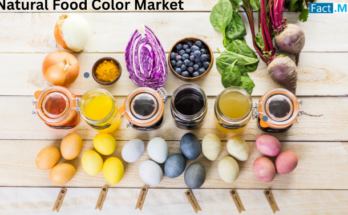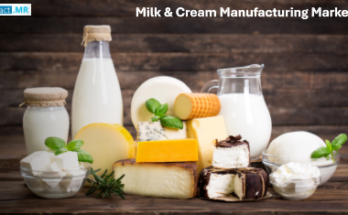One area that’s been buzzing lately is the dietary fibers market. You might have noticed shelves stocked with fiber-rich snacks, cereals, and supplements at your local grocery store. Did you know this market isn’t just a local buzz; it’s gone global? Yep, from bustling cities to remote villages, people everywhere are hopping on the fiber train.
It seems like everyone is talking about the benefits of fiber and for a good reason. So, what’s the deal with dietary fibers, and why are they in the spotlight?
Well, let’s start with the basics. Dietary fibers are the unsung heroes found in plant-based foods like fruits, veggies, whole grains, nuts, and seeds. Unlike other carbs, fibers aren’t fully digested by the body. Instead, they pass through your digestive system, doing all sorts of amazing things along the way. One of the most significant perks of fiber is its role in keeping your gut happy and healthy. This not only prevents constipation but also helps maintain a healthy balance of gut bacteria, which is essential for overall digestion and immune function.
But that’s not all! Fiber also plays a crucial role in managing blood sugar levels and cholesterol levels. Soluble fibers, like those found in oats and beans, form a gel-like substance in your gut, which helps slow down the absorption of sugar and cholesterol into your bloodstream. This can help prevent spikes in blood sugar and keep your heart healthy.
As per FACTMR, the global dietary fibers market is expected to witness a CAGR of 10% over the next 10 years. Moreover, the market is expected to reach a value of US $ 19.97 Bn by 2032.
Now, you might be wondering why there’s suddenly so much buzz around fiber. Well, with more and more people looking to improve their diets and prioritize their health, fiber has become a hot topic. Research has shown that diets high in fiber can help with weight management, reduce the risk of chronic diseases like heart disease and diabetes, and even improve overall longevity.
As a result, the dietary fiber market is booming. Brands old and new are jumping on the fiber bandwagon, offering everything from fiber-fortified snacks to supplements.
But with all the options out there, how do you know which fiber-rich products to choose? Well, it’s essential to look for whole foods whenever possible. That means opting for fruits, veggies, whole grains, nuts, and seeds over processed foods. Reading labels carefully can also help you avoid products loaded with added sugars and artificial ingredients.
And let’s not forget about sustainability. As we become more conscious of our impact on the planet, it’s essential to consider how our food choices affect the environment. Choosing products made with responsibly sourced ingredients and supporting brands that prioritize sustainability can make a big difference.
So, whether you’re looking to improve your digestion, manage your weight, or simply feel better overall, adding more fiber to your diet is a smart move. With so many delicious and nutritious options available, there’s never been a better time to embrace the wonderful world of dietary fibers! High-fiber foods are not only nutrient-dense but also tend to be more filling than their low-fiber counterparts.
By adding bulk to your meals and slowing down digestion, fiber helps promote feelings of fullness and satisfaction, which can aid in weight management and prevent overeating. Incorporating fiber-rich foods into meals and snacks can help you stay satisfied longer and reduce the likelihood of unhealthy snacking between meals.
Soluble fibers, found in foods like oats, beans, and fruits, dissolve in water to form a gel-like substance in your gut. This gel slows digestion, helping you feel fuller for longer and stabilizing blood sugar levels. Plus, soluble fibers are like little sponges, soaking up cholesterol and whisking it away, which is great news for your heart health.
As per FACTMR, soluble dietary fibers are expected to expand at a CAGR of 8.7% by 2032.
On the other hand, insoluble fibers, found in foods like whole grains, nuts, and vegetables, don’t dissolve in water. Instead, they act like nature’s broom, adding bulk to your stool and keeping things moving smoothly through your digestive tract. This helps prevent constipation and keeps your gut happy and healthy.
As the dietary fibers market continues to grow and evolve, consumers must stay informed and make choices that prioritize both their health and the health of the planet. By incorporating more fiber-rich foods into our diets and supporting brands that are committed to sustainability and transparency, we can nourish our bodies and our world for years to come.
So, to wrap it up, the dietary fibers market is on a steady rise, fitting right in with the way people are leaning towards healthier living these days. With more folks realizing the importance of fiber-rich diets for staying healthy and warding off diseases, the demand for products packed with dietary fibers is only going up.
And here’s the exciting part: as this demand keeps growing, manufacturers and suppliers are stepping up their game. They’re coming up with all sorts of cool and diverse products to meet everyone’s dietary needs and tastes.
All in all, the future of the dietary fibers market looks pretty bright. With this continued growth, we can expect to see even better health outcomes and overall well-being for people all around the world. So, let’s toast to a healthier tomorrow!
Related




